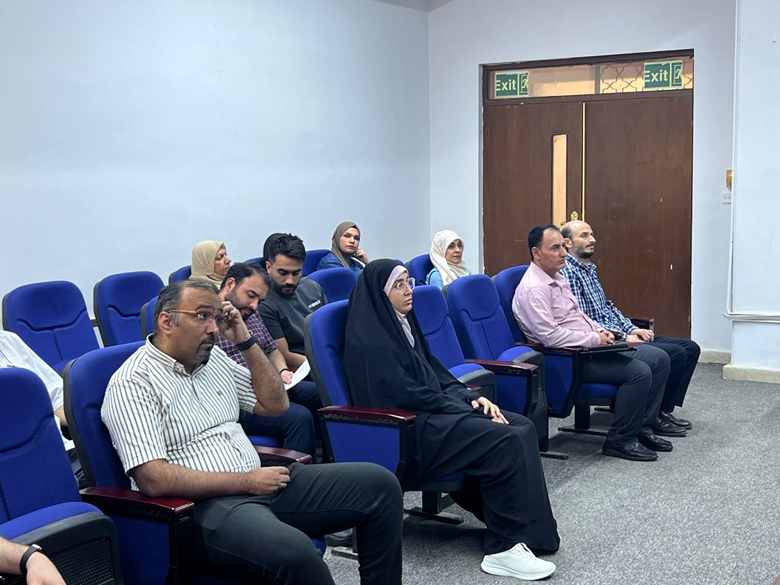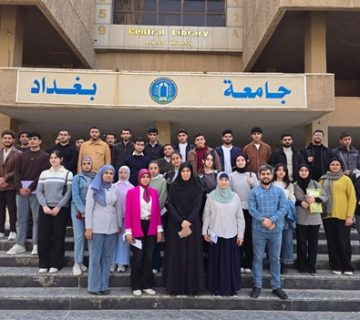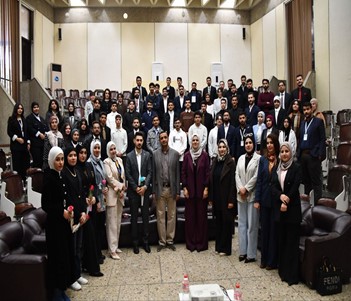College of Engineering, University of Baghdad holds a symposium entitled:
An Introduction to Biomedical Implanted Devices
The Department of Computer Engineering at the University of Baghdad, under the auspices of the Deanship of the College of Engineering, held a workshop entitled:
“An Introduction to Biomedical Implanted Devices”
Delivered by Assistant Lecturer Hussein Ali Hussein on May 19, 2025, at 10:00 a.m., in the department’s discussion hall, the symposium was attended by the Department Head, Dr. (Assistant Professor Dr. Firas Ali Saber), and a number of department faculty members. The symposium addressed the importance of implanted medical devices in the lives of people with chronic illnesses. It focused on introducing implanted medical devices by explaining (1) their types, (2) their operation, (3) the methods of transmitting information to and from them, (4) the electronic circuits used in them, and (5) the materials used in their manufacture). The symposium also addressed the medical frequency bands used to ensure human protection from side effects. The types of antennas used in implanted devices and how to avoid displacement problems (non-conformity) were also discussed. Proposals for developing these devices in the future were also discussed. The symposium concluded with several recommendations, the most important of which were:
- The spread of chronic diseases: The necessity of preventing chronic diseases to avoid the use of implantable medical devices.
- Implantable Medical Devices: Emphasis on their development due to their important role in diagnosing, monitoring, treating, or alleviating the symptoms of chronic diseases.
- Human Health: Emphasis on the use of implantable medical devices that are compatible with the human body and free of side effects or made from materials harmful to humans. Also, the use of appropriate medical frequencies is essential to prevent damage to the body’s cells when using high frequencies.
- Development of Implantable Medical Devices: This is achieved by using advanced technologies to reduce the size and power required to operate them, as well as increasing data transfer rates.
- Continuous Updating and Training: The need to organize ongoing workshops and training courses to familiarize academics and researchers with the latest methods and standards in the design of implantable medical devices.










